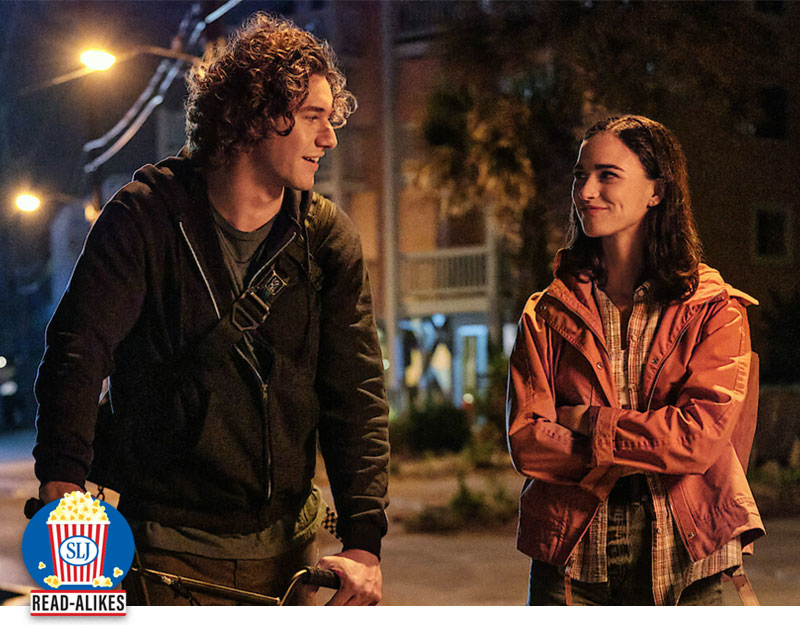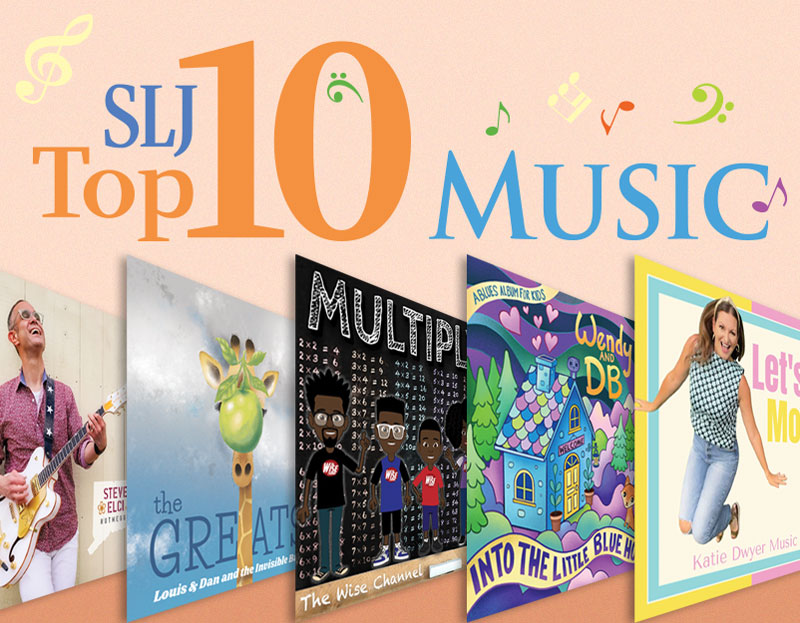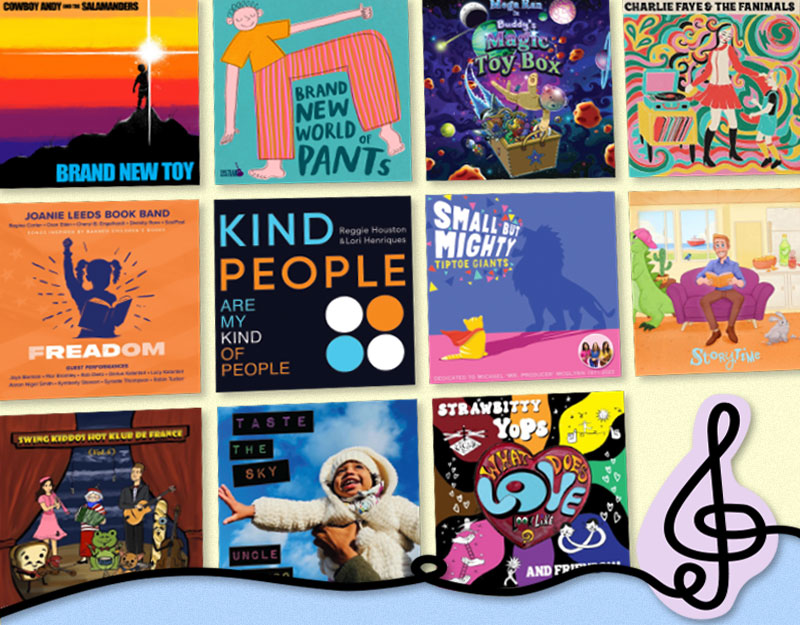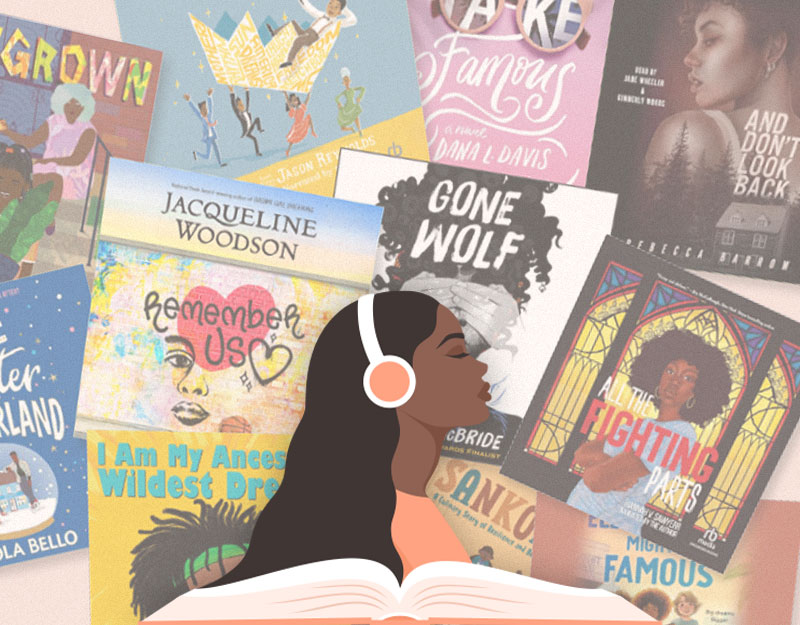31 Days, 31 Lists: 2019 Science and Nature Books

I always forget how much I enjoy this particular topic. When my library is constructing its year 101 Great Books for Kids list, two types of Nonfiction always threaten to dominate the list: Biographies and Science & Nature titles. Any why not? Only, within the world of Science & Nature there are so many smaller categories. Animals, Space, Germs, etc.
Today, a lovely long list of the books I particularly know and love from this year.
2019 Science & Nature
Beware of the Crocodile by Martin Jenkins, ill. Satoshi Kitamura
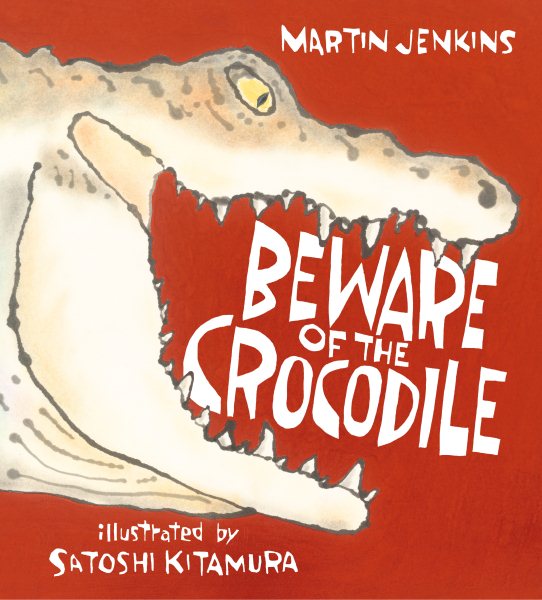
Though it bears quite a few similarities to the new Maxwell Eaton III book The Truth About Crocodiles, I think this book, while less silly, has a strange little humor and beauty of its own. Plus, it’s just fantastic to see Kitamura back and doing nonfiction. His crocs looks so oddly satisfied with themselves, it’s hard not to root for them.
ADVERTISEMENT
ADVERTISEMENT
Cells: An Owner’s Handbook by Carolyn Fisher

Meet one of the 37 trillion high-performance cells in an animal’s body. Take eye-popping trip through what cells do, what they’re made of, and why we’re lucky to have them. This is interesting. At first, I was disappointed by the reading since the author is mildly obsessed with repeating that the cell speaking is on a dog’s butt. But once you get away from the whole dog thing, the book becomes this wildly eclectic and interesting breakdown of what a cell really is and what it consists of. Certainly worth more reads.
Daring Dozen: the Twelve Who Walked on the Moon by Suzanne Slade, ill. Alan Marks

This was a cool idea for a book. I was always super unclear, as a kid, as to how many people actually walked on the moon and, for that matter, what they did while they were there. It’s pretty straightforward in terms of the art, so for me the text is the real lure. Does a nice job of making evident what, to too many of us, has remained unknown. Plus, who knew how cool the search for anorthosite was?
Encyclopedia of Strangely Named Animals, Volume One by Fredrik Colting & Melissa Medina, ill. Vlad Stankovic

Look. I am a simple soul. I don’t ask for much. Just tell me that there is an Australian spider out there called “Sparklemuffin” and I’m fairly happy for days on end. What makes this book so notable is that each animal gets one page and each page is big (the book clocks in at 12.7 inches tall). But the text on each one of those pages is not long or drawn out or dull. It’s peppy and interesting and informative. And yes, there is no Backmatter, so no awards for it, but something about its gentle watercolors and goofy critters (current favorite: The Sarcastic Fringehead that presses its disgusting mouth against the mouth of another Sarcastic Fringehead when it gets territorial) just makes me inordinately happy. Looking forward to Volume 2.
Everything Awesome About Dinosaurs and Other Prehistoric Beats by Mike Lowery

The cover says, “WARNING! Giant Fleas Inside” and y’know, it’s true. In my personal life my kids are very well acquainted with the work of Mr. Lowery all thanks to his illustrations for Mac Barnett’s Mac B: Kid Spy series. Turns out, when you release Lowery to his own devices the man is unstoppable. This pairs very well with fellow pre-historic history book Life: The First Four Billion Years by Martin Jenkins (seen below), if tonally different. Jenkins doesn’t lean quite as hard into the dino aspects of the story, and with the Grahame-Baker art has an edge in terms of weird looking extinct creatures. Lowery, however, makes up for realistic prowess with humor and facts delivered in a manner that kids will eat up with a spoon. Because he’s so appealing to look at, this book is going to have appeal for the little dino lovers as well as those on the more mature end of the spectrum.
Fever Year: The Killer Flu of 1918 by Don Brown

They will tell you that this book is YA, and that is not wholly untrue, but if I could slide the age bar down a smidgen I’d rank it square in the 10+ age range instead. It is a bit odd how little I actually knew about the Spanish Flu epidemic of 1918. You would have thought that at its centenary last year there would have been loads of people talking about it, and we know this is not the case. Of course, writing a nonfic GN of an illness is a difficult proposition. A lotta people lying down on these pages. Doesn’t sound like it would be particularly thrilling, but the man knows how to set up a narrative. All the more frightening when you realize that we never really quite figured out how it spread, why it targeted healthy, young people, and whether or not it might ever return. Gah!
Finding the Speed of Light: The 1676 Discovery that Dazzled the World by Mark Weston, ill. Rebecca Evans

Think it was Albert Einstein who first tried to measure the speed of light? Think again! Watch as 200 years earlier Ole Romer attempts to figure it out with just a homemade telescope and a clock. This is interesting. I like the writing very much. It really does get you very interested in Romer’s life, and that’s no small matter.
Flower Talk: How Plants Use Color to Communicate by Sara Levine, ill. Masha D’Yans

No color choice is random. Your host, a purple prickly pear, gives a cantankerous rundown of the job that each color has when a flower wears it and how it uses that color to attract different kinds of critters. A mighty clever way of showing that nature’s a lot smarter than we humans ever give it credit for. Loved D’Yans’ watercolors at work here. If anyone ever tries to tell me that all watercolor art looks the same, I’m pulling this puppy out. It’s really the perfect accompaniment to all the crazy cool facts inside. I’m still sort of reeling from some of the revelations in here.
Go for the Moon: A Rocket, a Boy, and the First Moon Landing by Chris Gall

Someday I’m going to make a booklist of picture books about authors and big moments in their youth. Things like Billy’s Booger by William Joyce and Shake, Rattle & Turn That Noise Down by Mark Alan Stamaty. This would fall under the same auspices and it’s really nice! I’ve always been enamored of Brian Floca’s Moonshot, but Gall manages to weasel into all the nooks and crannies that Floca didn’t cover. Technical stuff, like the weight of the engine, the height of it, and how the heck you get from the Columbia to the Eagle at all. Gall’s art is the most realistic I’ve ever seen it, and there’s this keen bit he puts at the end where he sort of shows that if you start off making models of planes, the logical last step would be to build your own in adulthood. Fun Facts, a Glossary, Sources, and Websites round it all off. I know we’re seeing a LOT of moonwalk books this year, but this one is a standout.
The Grizzly Mother by Hetxw’ms Gyetxw (Brett D. Huson), ill. Natasha Donovan

A nice companion to Eat Like a Bear by April Pulley Sayre, and with a Gitxsan Nation take. As a member of that nation, Gyetxw uses the book to define the life of a grizzly bear within the context of the natural world around it. I’d seen The Sockeye Mother before, but I liked the text of this book a lot more. Donovan (Métis Nation) renders the art both in both realistic and artistic styles, with swirls and curls and loops of color. It’s beautiful as an object and practical as a book. Sometimes I think we forget that even our science books have opinions and points of view. This one most certainly does and is stronger for it.
Hey, Water! by Antoinette Portis
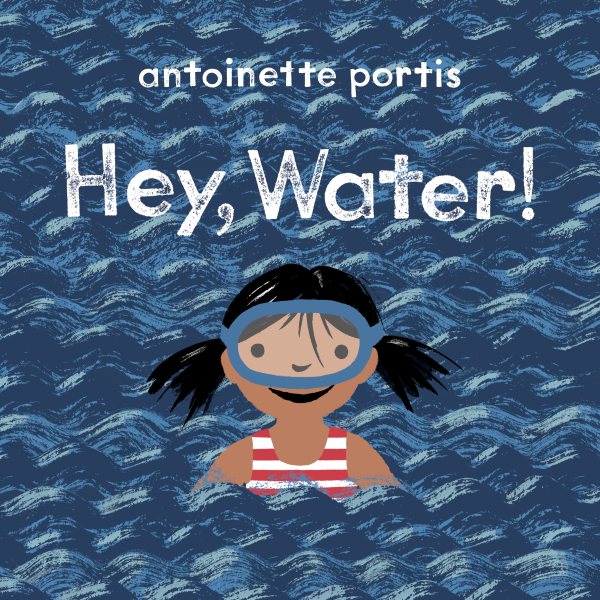
The more I’ve examined this book, the more I’ve come to really love it. A librarian pointed out to me that with the words in bold you can read it for very very young people and then use the rest of the text for the just slightly older. Honestly, if they don’t turn this into a board book in a couple years they’ll be missing a trick. Portis is at her best here, and look at how she pulls her focus in and out as she displays water in its myriad forms. I love it when it collapses from an ocean to a dewdrop to a tear and then back out as steam and rain. This book is masterful. Wouldn’t it be cool if it won a Geisel.
How Did I Get Here? by Philip Bunting

What a treat! We’ve seen a whole slew of picture books talking about the beginning of the universe and how it relates to you directly (heck, last year I think I saw three different titles on the subject). This cover looks awfully goofy so I was all set to disregard it in some way. Instead, it’s a hoot! Super funny. My favorite page, without a doubt, has to be the one where you see all the critters and Bunting writes in a footnote, “Our ancestors first developed eyes at about this stage in our journey. All peepers on creatures and creations before this point in the book have been gratuitously added for comic effect.” So it may just be my overwhelming love of googly eyes that tips the balance, but honestly the writing is great and the art darned peppy.
I See Sea Food: Sea Creatures That Look Like Food by Jenna Grodzicki

It is very important to me that you not miss this book. I say this because I came dangerously close to missing it myself and it just kills me to think of how close I came. Essentially, the title says it all. There’s the Egg Yolk Jellyfish (also known as the Fried Egg Jellyfish), the Australian Pineapplefish, the horrifyingly delicious looking Chocolate Chip Sea Star (Google it . . . it’s worth it), and more. And talk about a title you could booktalk without a blink! I recommend starting with the Pizza Crust Sea Slug and going from there. Every single one of these creatures is real, and their photographs are truly stunning. I particularly enjoyed a section at the end called “Sea Food or Me Food?” where you have to figure out from the photos whether or not the food is a creature or something you can actually devour.
Just Right: Searching for the Goldilocks Planet by Curtis Manley, ill. Jessica Lanan
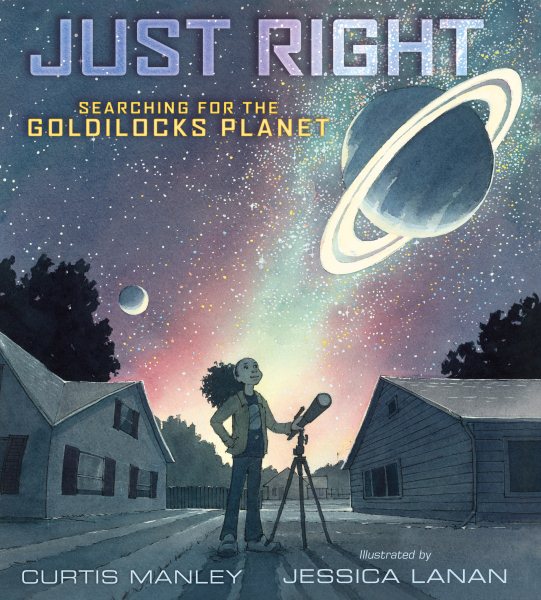
I’m giving this extra points for really clarifying, and making kid-friendly, the parameters for a habitable planet. Kids wonder about whether or not there are aliens out there, so this book gives the scientifically minded amongst them a concrete explanation of what it would take. I didn’t know anything about the “habitable zone” (where a planet can have liquid, but it’s just the right distance from its sun). And I kind of geeked out over the different planets that we’ve ruled out or the fact that a star twinkles because a planet has passed between us and its light (so cool!!). Yeah. I like this book.
Karl’s New Beak: 3-D Printing Builds a Bird a Better Life by Lela Nargi

I’m not going to tell you that this is the first book of its kind that I’ve seen, because it’s simply not true (that honor went to Beauty and the Beak by Deborah Lee Rose back in 2017). But I did find Nargi’s book to be a beautifully designed and thoroughly compelling story helped, in no small part, by just how frickin’ weird hornbills are. Abyssinian ground hornbills, to be precise. Karl lives in the Smithsonian’s National Zoo and, in time, his lower beak was worn away. I would have appreciated a word or two on whether or not this is normal in hornbills and if they tend to die of starvation in the wild a lot, but no matter. There are some rather painful shots of Karl as he tries to eat with his shortened beak, and artificial ones just weren’t cutting it. Here’s where it gets cool. The Smithsonian National Museum of Natural History had an old Abyssinian ground hornbill skeleton in its archive from the 1930s. So they used it to make a 3-D beak, only it took quite a lot of trial and error. I always like it when a book shows how you have to use persistence to find the best solution, and this one delivers. Plus, it’s just lovely to look at.
Life: The First Four Billion Years by Martin Jenkins, ill. Grahame Baker-Smith

Foof! Foof, I say! This is the book for the kid unafraid to think. Essentially, this is a clear cut explanation of how life truly began on earth, but it’s certainly grander than that. Everything from the Big Bang on out. I personally found the single-celled organism sections just fascinating, but that’s my own interest. One of the real lures, though, is Baker-Smith’s art. You know how you sell this book to kids? You tell them that the wildest aliens in the world have NOTHING on the creatures in this book. All these crazy extinct underwater critters, as well as some truly strange land denizens as well. I know we have books about the origins of life on earth already, but few make all the different eras as clear cut and understandable as this. Necessary for your collections.
Moth: An Evolution Story by Isabel Thomas, ill. Daniel Egnéus

Oh, lovely lovely, how lovely this book is. The story of the peppered moths that adapted and then un-adapted to pollution on the trees has always stood as sort of the quintessential evolution story but until now no one’s ever tried to turn it into a picture book. I remember when parents would wander into the library looking for ANY kind of book that contained an explanation of evolution (still happens, I hear). This book is as good a recounting of natural selection as ever you could find. Plus the cover is shiny. Soooo shiiiiny….
My Mighty Journey: A Waterfall’s Story by John Coy, ill. Gaylord Schanilec

When a nonfiction book is distinctly regional, be that region NYC or South Chicago or Hawaii even, I have to view it through the lens of would-this-be-of-any-use-to-anyone-else-in-the-country? And in this case, yep. Most definitely. We see lots of stories about rivers (see: River by Elisha Cooper) but waterfalls get short shrift, particularly metropolitan waterfalls. In fact, I lived in Minneapolis for years and knew nothing about the Mississippi River’s one and only waterfall. Known as St. Anthony Falls, this book shows its progression fifteen miles upriver from St. Paul to Minneapolis. Gorgeous art (and a whole section in the back on the subject of how these prints were created at the Minnesota Center for Book Arts in Minneapolis), renders the book a whopping 14 inches tall, so FYI, librarians. Some mention is made of the Dakota and Ojibwe people of the region, long before the white settlers starting mucking with it (and muck they did). A nice clarification of each section is also found in the back. Pretty darn beautiful overall.
Ostriches (The Superpower Field Guide) by Rachel Poliquin, ill. Nicholas John Frith

Okay. I’m not gonna lie to you. I was completely in the tank for Poliquin/Frith’s previous outing on Beavers. I mean, to this day I will accost random strangers at cocktail parties and start blabbering on about how beavers eat during the winter. Now I know this duo had created a book on Moles this year as well, and I sort of missed out on that, but when I saw that they’d covered Ostriches I was hooked! For personal reasons of my own (that may become apparent in the near future), I am very interested in ostriches. And this book makes an incredibly strong case for why these birds, whose eyes are literally bigger than their brains, are incredible. There is one moment that is just marvelous where the book teaches you about the ostrich’s “impossible ever-flow lung” and then tells you that if you ask your parents over dinner “did you know that ostriches don’t breathe out the same air they just breathed in?” your parents will not know. They won’t. And the book is right about that. Seriously, read this thing!!!
Overview: A New Way of Seeing Earth (Young Explorer’s Edition) by Benjamin Grant with Sandra Markle

I’m not a huge fan of the “Young Reader’s” editions of adult books that come out each year. Seems to me the adult versions are often far more interesting than their Juv permutations, but there are always exceptions to this rule. Cleverly, someone at Crown Books for Young Readers decided to pair Benjamin Grant with children’s nonfiction author Sandra Markle. The end result is a truly breathtaking book that any kid could pore over for hours at a time. The section on mines is fascinating, if only because the colors are so beautiful and striking. If you come away from this book with anything, it is a sense that pollution, microbes, algea, and metals make for surprisingly striking colors when you get up high enough.
There is, unfortunately, one big flaw in the book that doesn’t keep me from excluding it on this list, but I couldn’t overlook. In fact, I’m a little baffled how it got in here at all. Chapter 9 is “A Planet of Marvels” celebrating structures made by humans. And this is all well and good until you get to the section on Central Park where it reads, “In 1853, the city bought more than 750 swamp, rocky acres (304 hectares) in the center of Manhattan that were unsuitable for building homes and businesses.” Unsuitable for homes? And how, precisely, does Seneca Village play into that version of history? For a MUCH better encapsulation of the history of Central Park, please check out this year’s fellow nonfiction title for older readers Manhattan: Mapping the Story of an Island by Jennifer Thermes (found on yesterday’s American History list). For everything else, this book is quite good.
Power Up: Your Incredible, Spectacular, Supercharged Body by Seth Fishman, ill. Isabel Greenberg

Fishman already impressed me when he wrote A Hundred Billion Trillion Stars a year or two ago. That book won a Mathical Book Prize, and I’ve no doubt that this one will get a whole host of science awards as well. The book considers the idea that the body produces energy. Kids have heard that one before, but the idea that we could actually power something with that energy, like electricity powers a lightbulb, is novel. A clever new angle on an old idea.
Rocket to the Moon! (Big Ideas That Changed the World) by Don Brown

Don Brown is finally writing some of his nonfiction comics for the kids now! Usually he does just YA these days, so I welcome the switch. My kids enjoy Brian Floca’s Moonshot so I was interested to see if they’d like this as well. And since it begins with an explosion they were pretty much on board from the start. Beautifully rendered and explained. I know we saw a LOT of moon landing books out this year, but this is one of the tops.
Saving the Tasmanian Devil: How Science Is Helping the World’s Largest Marsupial Carnivore Survive by Dorothy Hinshaw Patent

When Devil Facial Tumor Disease started wiping out the Tasmanian Devil population in the 90s did humans stand by and watch? No sir! Follow these brave scientists as they search for a vaccine that might help both the devils and, someday, the humans too. I already knew that the Tasmanian Devils were being wiped out by a weird facial cancer passed on by biting. What I did not know was how humans were helping and the ways in which what they were learning was going to be applied to human cancers. I take some issue with how she lays the book out (she kind of dives in, assuming you already know what a Tasmanian Devil even is) but by and large it’s pretty good.
Skulls! by Blair Thornburgh, ill. Scott Campbell

ADVERTISEMENT
ADVERTISEMENT
“Skulls are safe and snug, like a car seat for your brain.” The kickiest little human body book you ever did see. First off, killer cover, so I have to give it points right there. Then there’s the fact that Scott Campbell was an ideal choice for the art. He manages to present these skulls in a really non-creepy way. Well.. okay, they’re still creepy but they’re FUN creepy! Great backmatter (“Cool Skull Facts!”) and just a lovely paean to your own strong body.
Titanosaur: Discovering the World’s Largest Dinosaur by Dr. José Luis Carballido & Dr. Diego Pol, ill. Florencia Gigena

There are a lot of reasons to be excited about this particular dino book. Generally speaking, dino digging isn’t particularly thrilling, but this story is infused with cool. When a gaucho in Patagonia, Brazil discovered a clear as crystal dino bone sticking out of his land, he contacted the local museum. Next thing you know the dino is the largest skeleton of the largest dinosaur ever found. Then it gets even crazier. It’s not just one dino but a whole slew of them! Written by the paleontologists who led the dig (so that’s cool) Gigena pairs actual photographs of the scientists with illustrations of them at work. Even if you’re not dino crazy to begin with, you can’t help but get sucked into this story. The best part? They named the dino after the gaucho who found it first and let the scientists dig up his land.
The Truth About Crocodiles by Maxwell Eaton III
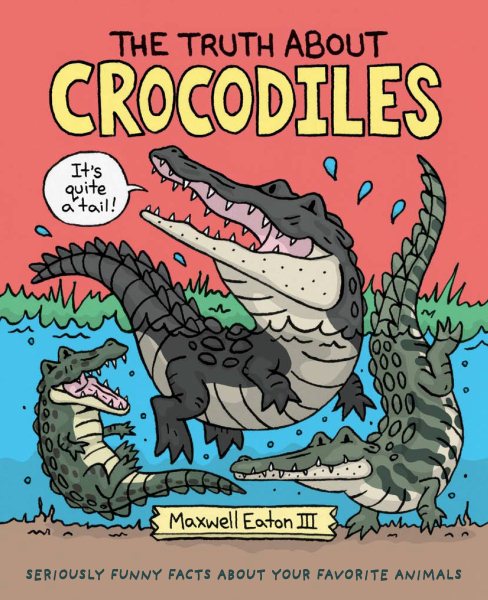
I don’t suppose it’s very fair to keep putting Eaton’s books in this series onto my lists. I wouldn’t, honestly, if it weren’t for the not insignificant fact that they’re all brilliant. This croc book is no exception. Tons, LOADS, of good information all told with humor. One of my favorites in the series, to be perfectly frank.
Wait, Rest, Pause: Dormancy in Nature by Marcie Flinchum Atkins

When the going gets tough, the tough wait, rest, and pause. Magnificent photography introduces dormancy to the youngest of readers. I don’t even know where to begin in my praise of this. All you need to see is the cover with its frozen ladybugs to see how the photography is just jaw-dropping. Then there’s the simplicity of the text, which makes dormancy (not hibernation) understandable to the youngest of readers. The backmatter distinguishes between Plant Dormancy, Diapause, Hibernation, Torpor, Brumation, and Estivation and look at that Bibliography!! Teachers, your favorite book has arrived. One of my clever co-workers even noticed that you could use this book with kids to get them to take a moment, stop, and slow down. She suggested pairing it with Quiet by Tomie de Paola and A Stone Sat Still by Brenden Wenzel. Brilliant.
Interested in the other lists? Here’s the schedule of everything being covered this month. Enjoy!
December 1 – Great Board Books
December 2 – Board Book Reprints & Adaptations
December 3 – Transcendent Holiday Picture Books
December 4 – Picture Book Readalouds
December 5 – Rhyming Picture Books
December 6 – Funny Picture Books
December 7 – CaldeNotts
December 8 – Picture Book Reprints
December 9 – Math Books for Kids
December 10 – Bilingual Books
December 11 – Books with a Message
December 12 – Fabulous Photography
December 13 – Translated Picture Books
December 14 – Fairy Tales / Folktales / Religious Tales
December 15 – Wordless Picture Books
December 16 – Poetry Books
December 17 – Easy Books
December 18 – Early Chapter Books
December 19 – Comics & Graphic Novels
December 20 – Older Funny Books
December 21 – Science Fiction Books
December 22 – Informational Fiction
December 23 – American History
December 24 – Science & Nature Books
December 25 – Unconventional Children’s Books
December 26 – Unique Biographies
December 27 – Nonfiction Picture Books
December 28 – Nonfiction Books for Older Readers
December 29 – Older Reprints
December 30 – Middle Grade Novels
December 31 – Picture Books
Filed under: 31 Days 31 Lists, Best Books, Best Books of 2019, Booklists
About Betsy Bird
Betsy Bird is currently the Collection Development Manager of the Evanston Public Library system and a former Materials Specialist for New York Public Library. She has served on Newbery, written for Horn Book, and has done other lovely little things that she'd love to tell you about but that she's sure you'd find more interesting to hear of in person. Her opinions are her own and do not reflect those of EPL, SLJ, or any of the other acronyms you might be able to name. Follow her on Twitter: @fuseeight.
ADVERTISEMENT
ADVERTISEMENT
SLJ Blog Network
Name That LEGO Book Cover! (#53)
Exclusive: Vol. 2 of The Weirn Books Is Coming in October | News
Fighting Public School Book Bans with the Civil Rights Act
Take Five: Middle Grade Anthologies and Short Story Collections
ADVERTISEMENT



